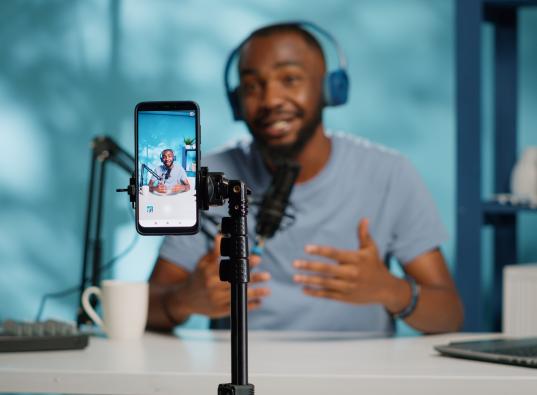How does a website make more money?
Take a moment, and think about this question. Have you ever asked yourself this question? What did your answers look like? What results did you get?
To make more money you have to sell more or make more profit on each sale. Yes, it is that obvious, but like most Zen maxims, the answer leads to more questions.
How does one sell more?
You either need to get more people to your website, or you need to convince more of your visitors to buy.
We have a whole department focussed on helping you get more people to your site. The web is littered with opinions on how to best do this. So what about the other option?
How do you convince more visitors to buy?
There it is - the real question I’m sure you thought about when you decided to invest your time in this article.
This 3-part process will not only help you get more from your current visitors, but will also help you to keep improving.
Here it is:
- Get a clear picture of the current state of your website, specifically those parts that are geared towards the process of making a sale.
- Figure out what states your visitors go through to become customers, and hopefully repeat customers.
- Guide visitors through the states ever more effectively.
Get a clear picture of where you are at
“The most valuable commodity I know of is information.” – Gordon Gekko (Wall Street)
The more you know, the better you are equipped to make decisions. With enough information you can predict what people will do and when they will do it, even before they know it themselves. You will be able to send your customers promotions for products they might not even dream to buy, but the moment they get your communication they will move mountains to get that product.
Before you can do this you need to know where you are at. You need to get to know your visitors intimately.
- Where do they come from?
- What are they looking for when they come to your site?
- What are your first contact points with visitors?
- Where do they leave your site?
- Why do they leave?
- What do they do just before they buy?
- What made them decide to buy at that exact time?
Most of the answers can be obtained from a well implemented Google Analytics setup, and effective interpretation of the relevant reports. You will also have to make some educated guesses and test them with experiments. Specifically when it comes to the “why” questions.
Make notes of the outcomes of each of the bits of information, what you think it means, and what you learn from your experiments.
Where do visitors come from?
You want to know where your visitors are currently coming from. More specifically you want to figure out if there is a difference between people who come to your site and ends up buying, and those that leave without taking any action. You also want to make sure you can see which of your marketing campaigns are delivering the results you desire. Measuring this before you start experimenting will also alert you when you are beginning to move into a new market space, or if your target customers begin to shift.
Where do visitors first land when they come to the site?
When people land on your site for the first time they know nothing about your business. They have no reason to trust you. If the current page does not give them what they are looking for they will leave. If they do decide to stay, how will they know where to go next? Are you willing to trust random chance to grow your business? If you are, why not build your business at the craps table?
Figure out where people first interact with your site. Take them by the hand, guide them through your site, using clear instructions, make sure you have the best possible chance to fulfil their need, and turn this visitor into a customer.
Understand the common paths people take through the site?
Look at the way people currently use your site - where do they go? Which pages do they visit, which pages never see any traffic? Are there any pages that often gets visited in the same sequence? Note these.
Where are people leaving the site?
Some of the people who visit your site will inevitably leave without buying anything. You need to understand where people are leaving. Ask yourself questions about these people. Are they leaving because they figured out that they are not part of your target market? Are you losing legitimate business from these pages? Can you change the page to plug the hole in your funnel? Try to understand why you are losing people at this point.
Once you know what percentage of people who land on a specific page leave your site, you can begin testing different ways to keep people from leaving at this point. Monitoring the analytics at this point will tell you if your fix is working or not, both of which will tell you more about your users.
What pages lead directly to sales?
You need to understand the people who do buy even better than those who do not. What happens on the pages that lead to sales; how do these pages differ from pages that do not? How do the path people followed to come to these pages differ from those that caused people to leave? Do visitors to these page come from different sources? Do these visitors begin their interaction with your site at a different point than other visitors?
Note your answers to these questions, and try and figure out the reason behind these differences. Then follow the Build - Learn - Test methodology from the end of this article to see if your reasons match the figures.
Identify the states a visitor must go through to become a customer
There is a difference between someone who visits your site for the very first time, and someone popping back in to buy something from you for the fifth time.
Some marketers reckon you need to interact with a visitor more than 7 times before they will buy something for the very first time. If every one of those interactions are the same, your results will be hit and miss. If, on the other hand, you plan out a series of experiences for your visitors, you will find more of them will become customers. Interactions with your site become much more predictable, so you will be able to fix parts of the experience that are losing you money.
From casual first timer to repeat customer
The states people go through on the road to becoming repeat customers will differ from site to site and from industry to industry, but in every case you need to find the series of steps they need to go through before they become repeat customers.
Let me break it down.
Before a casual visitor can become a repeat customer they have to become a first=time customer. Their experience during this state will have a significant impact on the likelihood that they will do any further business with you. I’m stating the obvious, but every interaction should be obvious, with a clear way of measuring when a visitor moves from one state to the next.
So for a simple business you have the following states:
- Casual Visitor (someone landing on your site as the result of your marketing efforts)
- Repeat Visitor (A casual visitor that have returned to your site for whatever reason)
- Subscribers (Once they decide that the information on the site has enough value they decide that they want to be kept up to date)
- First time customers (someone who took action and bought from you)
- Repeat customers (first time customers who return to buy more of your products or services)
- At every stage of the process your visitor has a different need that must be met in order for them to move to the next state, and every state has entrance criteria that can be measured, so you know how many people moved from one state to the next in any given period of time.
What is action is needed to move a visitor from one state to the next?
If you have a list of states, make a note next to each state telling you what is needed to move people from a previous state to this one.
For instance, if a visitor signs up for your email newsletter, they are no longer in the repeat visitor state, but have progressed to the subscriber state. You measure this by the number of subscriptions you got during the period in question. If you change your site, and suddenly your monthly subscribers double, it is a clear indication that people are converting from repeat visitors to subscribers more effectively than in the past.
The better you convert people at every step of the way the more sales you will make. You will also know at any time if an action you took to improve conversion at any step had a negative impact on your main goal of making more sales.
Build, Measure, Learn Loop
A number of “why” questions need to be asked during this process. We cannot know exactly why people are doing things, but the answers to the “why” questions can be tested. If you suspect that people are leaving your site before completing their checkout because there are too many steps in the process, all you need to do is reduce the steps and see if the reduction makes a difference.
For every question you want to answer in your business there are a corresponding experiment that will give you enough information to make a good decision. The key is to deconstruct the question far enough to make the result of such an experiment unambiguous.
Enter the loop.
Build
Once you suspect you have an answer, you change your site to match the answer you think will make a difference. Before you release it, you make a note of what you expect the result of the change to be, and why you expect that result.
Measure
Next you release the change, and measure the relevant metrics. Does the result match your expected results, are the results better or worse than you expected, or were there no effect at all? Get as much data as you can about any changes in the user reaction.
Learn
Now you interpret your results. Look at your notes from before the experiment. Do your results validate your assumptions? Are you able to make new deductions based on the new information? What can you improve?
Conclusion
The process is quite simple, and repeatable. The more times you go through this cycle, the better you get at it. Experience is key to asking the right questions. Cross industry experience also leads to different perspectives. If you want to put the process in high gear get some experts in to help you build measure and learn.
If you implement this process today, what would your business look like in a year’s time?
Need Assistance with Digital Strategy?
Rogerwilco’s team of strategists, business analysts and data scientists is here to help.





